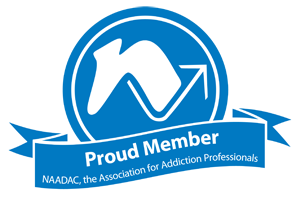
Trauma and stressor– related disorders include disorders in which exposure to a traumatic or stressful event is listed explicitly as the diagnostic criterion. These include reactive attachment disorder, disinhibited social engagement disorder, posttraumatic stress disorder (PTSD), acute stress disorder, and adjustment disorders.
Psychological distress following exposure to a dramatic or stressful event is quite variable. In some cases, symptoms can be well understood within an anxiety – or fear – based context. It is clear, however, that many individuals who have been exposed to a traumatic or stressful event exhibit a phenotype in which, rather than anxiety– or fear– based symptoms, the most prominent clinical characteristics are anhedonic and dysphoric symptoms, externalizing angry and aggressive symptoms, or disassociative symptoms. Because of these variable expressions of clinical distress following exposure to catastrophic or aversive events, the aforementioned disorders have been under separate category: trauma – and stressor– related disorders. Furthermore, it is not uncommon for the clinical picture to include some combination of the above symptoms. Such a heterogeneous picture has long been recognized in adjustment disorders as well. Social neglect– that is, the absence of adequate caregiving during childhood– Is a diagnostic requirement of both reactive attachment disorder and disinhibited social engagement disorder. Although thee two disorders share a common ideology, the former is expressed as an internalizing disorder with depressive symptoms and withdrawn behavior, while the latter is marked by disinhibition and externalizing behavior.
Post traumatic stress disorder (PTSD)
The essential feature of post-traumatic stress disorder (PTSD) is the development of characteristics symptoms following exposure to one or more traumatic events. The clinical presentation of PTSD varies. The directly experienced traumatic events include, but are not limited to, exposure to war as a combatant or civilian, threatened or actual physical assault (physical attack, robbery, mugging, childhood physical abuse), threatened or actual sexual violence (forced sexual penetration, alcohol/ drugs– facilitated sexual penetration, abusive sexual contact, noncontact to sexual abuse, sexual trafficking), being kidnapped, being taken hostage, terrorist attack, torture, incarceration as a prisoner of war, natural or human– made disasters, and severe motor vehicle accidents. For children, sexually violent events may include developmentally inappropriate sexual experiences without physical violence or injury. A life – threatening illness or debilitating medical condition is not necessarily considered a traumatic event. Medical incidents that qualify as traumatic events in both sudden, catastrophic events (waking during surgery, anaphylactic shock). Witness events include, but are not limited to, or observing threatened or serious injury, natural death, physical or sexual abuse of another person due to violent assault, domestic violence, accident, war or disaster, or a medical catastrophe in one’s child (a life-threatening hemorrhage). In direct exposure to learning about an event is limited to experience is affecting close relatives or friends and experiences that are violent or accidental (death due to natural causes does not qualify). Such events include violent personal assault, suicide, serious accident, in serious injury. The disorder may be especially severe or long– lasting when the stressor is interpersonal and intentional (torture, sexual violence).
PTSD can occur at any age, beginning after the first year of life. Symptoms usually begin within the first three months after the trauma, although there may be a delay of months, or even years, before criteria for the diagnoses are met. There is abundant evidence called delayed expression with the recognition that some symptoms typically appear immediately and that the delay is in meeting full criteria.
Frequently, an individual’s reaction to the trauma initially meets the criteria for acute stress disorder in the immediate aftermath of the trauma. The symptoms of PTSD and the related predominance of different symptoms may vary overtime. Duration of the symptoms also varies, with complete recovery within three months of occurring in approximately one – half of adults, while some individuals remain symptomatic for longer than 12 months and sometimes for more than 50 years. Symptom recurrence and intensification may occur in response to reminders of the original trauma, ongoing life stressors, or newly experienced dramatic events. For older individuals, declining health, worsening cognitive functioning, and social isolation may exacerbate PTSD symptoms.
For more information on spiritual trauma and its effects, feel free to check out this article which was featured as a 2-part series in the Pro section of PsychCentral.
References: American Psychiatric Association. (2013). Diagnostic and statistical manual of mental disorders (5th ed.). Arlington, VA: American Psychiatric Publishing.




